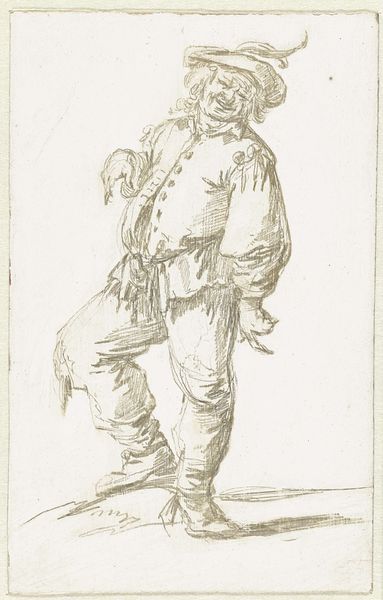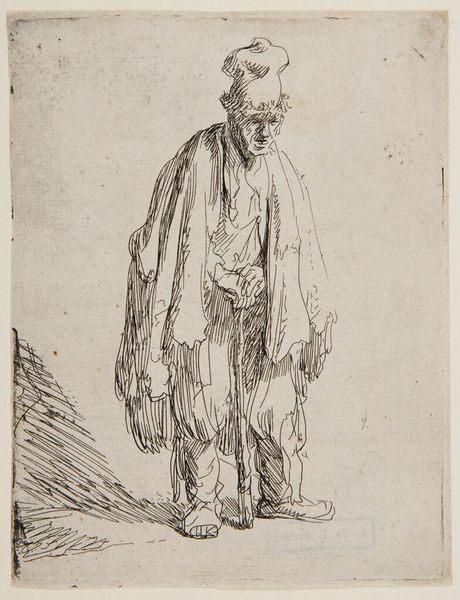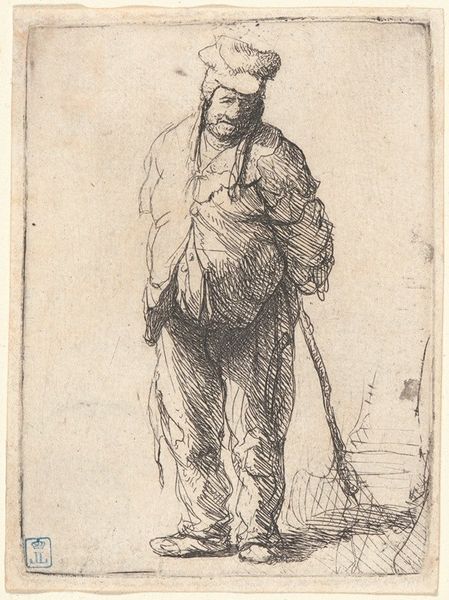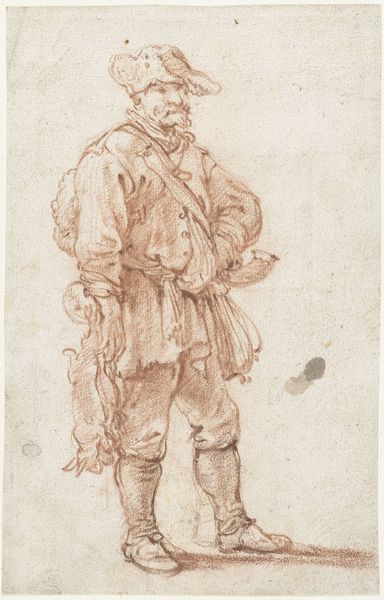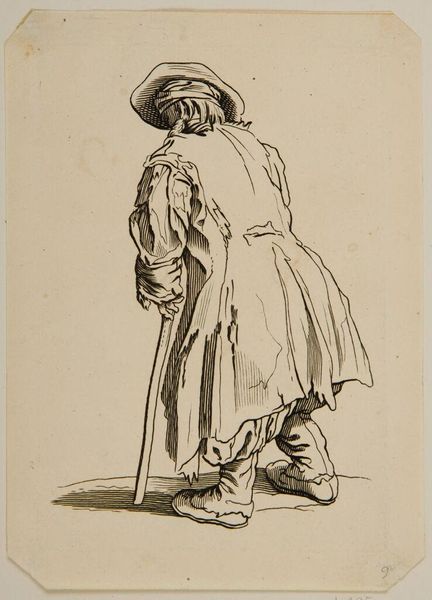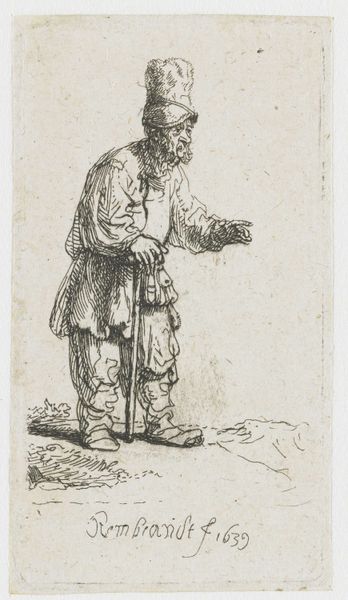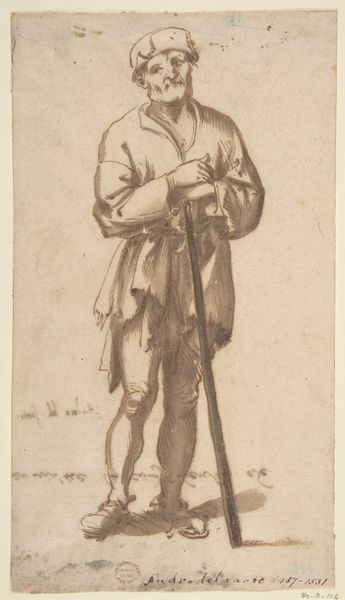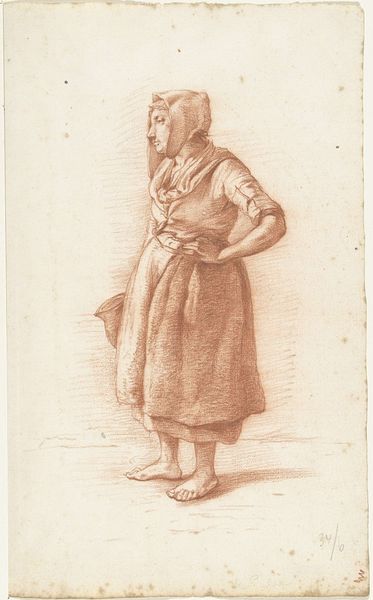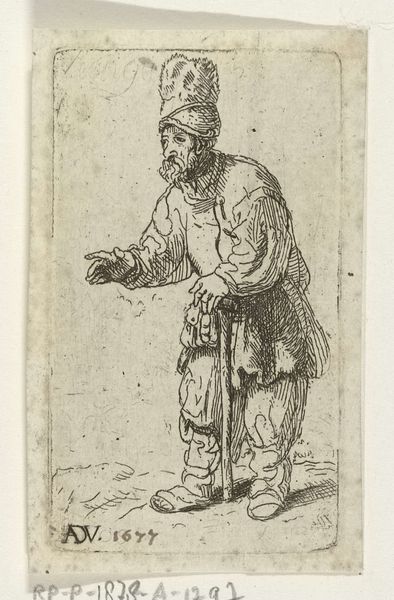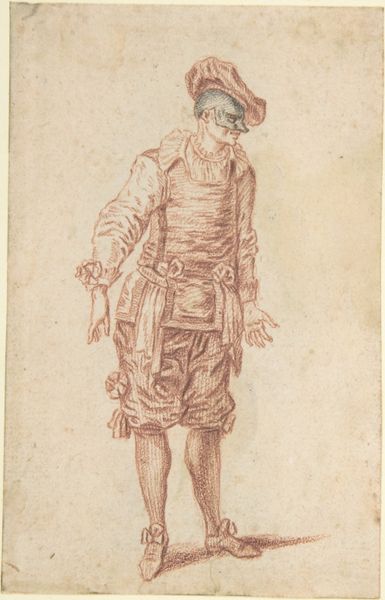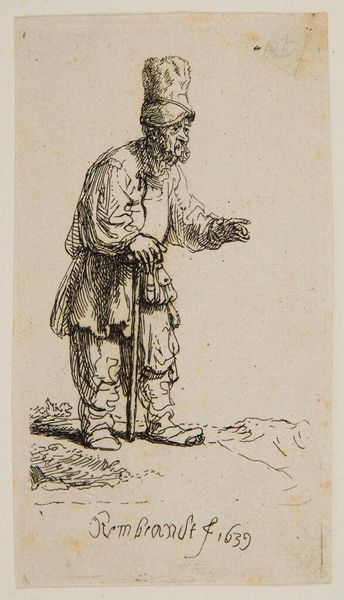
drawing, paper, ink
#
portrait
#
drawing
#
imaginative character sketch
#
light pencil work
#
quirky sketch
#
pencil sketch
#
figuration
#
paper
#
personal sketchbook
#
ink
#
idea generation sketch
#
romanticism
#
pen-ink sketch
#
sketchbook drawing
#
genre-painting
#
sketchbook art
#
fantasy sketch
#
realism
Dimensions: height 135 mm, width 77 mm
Copyright: Rijks Museum: Open Domain
Reinierus Albertus Ludovicus baron van Isendoorn à Blois made this etching of a standing farmer. It gives us a glimpse into the social dynamics of the Netherlands, likely in the early 19th century. Here, the artist, a baron himself, presents a rural figure. How does the image create meaning through its visual codes? The farmer’s clothing, stance, and somewhat coarse features all contribute to a depiction of a particular social class. The Netherlands at this time had a strict class structure. Aristocrats often depicted the working class in ways that reinforced existing power dynamics. This image reflects the cultural interest in portraying different social types, something that became increasingly popular with the rise of nationalism and ideas about the character of a country. To understand this work better, we need to dig into the social history of the Netherlands. What was the relationship between the aristocracy and the farmers? Images like these are valuable resources that allow us to examine the social conditions that shaped artistic production and reception.
Comments
No comments
Be the first to comment and join the conversation on the ultimate creative platform.
